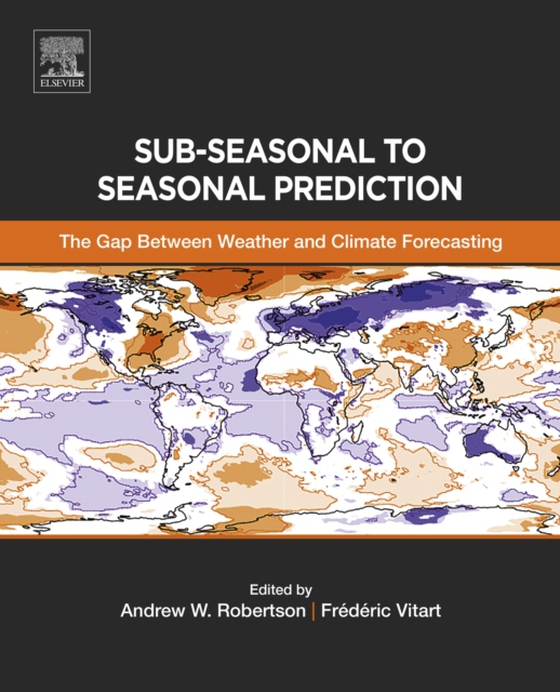
Sub-seasonal to Seasonal Prediction e-bog
1021,49 DKK
(inkl. moms 1276,86 DKK)
The Gap Between Weather and Climate Forecasting: Sub-seasonal to Seasonal Prediction is an ideal reference for researchers and practitioners across the range of disciplines involved in the science, modeling, forecasting and application of this new frontier in sub-seasonal to seasonal (S2S) prediction. It provides an accessible, yet rigorous, introduction to the scientific principles and sources...
E-bog
1021,49 DKK
Forlag
Elsevier
Udgivet
19 oktober 2018
Længde
585 sider
Genrer
PHVJ
Sprog
English
Format
pdf
Beskyttelse
LCP
ISBN
9780128117156
The Gap Between Weather and Climate Forecasting: Sub-seasonal to Seasonal Prediction is an ideal reference for researchers and practitioners across the range of disciplines involved in the science, modeling, forecasting and application of this new frontier in sub-seasonal to seasonal (S2S) prediction. It provides an accessible, yet rigorous, introduction to the scientific principles and sources of predictability through the unique challenges of numerical simulation and forecasting with state-of-science modeling codes and supercomputers. Additional coverage includes the prospects for developing applications to trigger early action decisions to lessen weather catastrophes, minimize costly damage, and optimize operator decisions. The book consists of a set of contributed chapters solicited from experts and leaders in the fields of S2S predictability science, numerical modeling, operational forecasting, and developing application sectors. The introduction and conclusion, written by the co-editors, provides historical perspective, unique synthesis and prospects, and emerging opportunities in this exciting, complex and interdisciplinary field. Contains contributed chapters from leaders and experts in sub-seasonal to seasonal science, forecasting and applications Provides a one-stop shop for graduate students, academic and applied researchers, and practitioners in an emerging and interdisciplinary field Offers a synthesis of the state of S2S science through the use of concrete examples, enabling potential users of S2S forecasts to quickly grasp the potential for application in their own decision-making Includes a broad set of topics, illustrated with graphic examples, that highlight interdisciplinary linkages
 Dansk
Dansk

